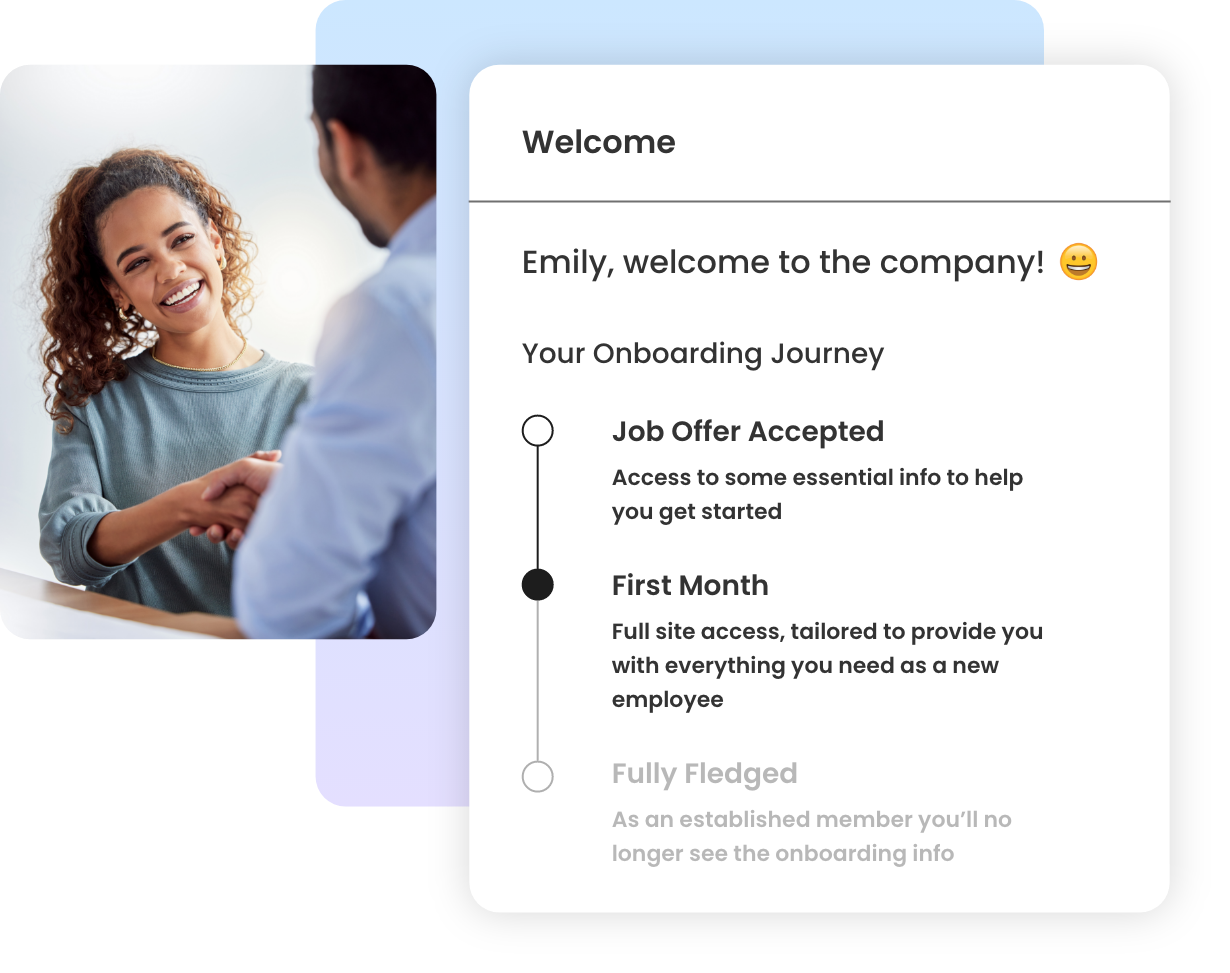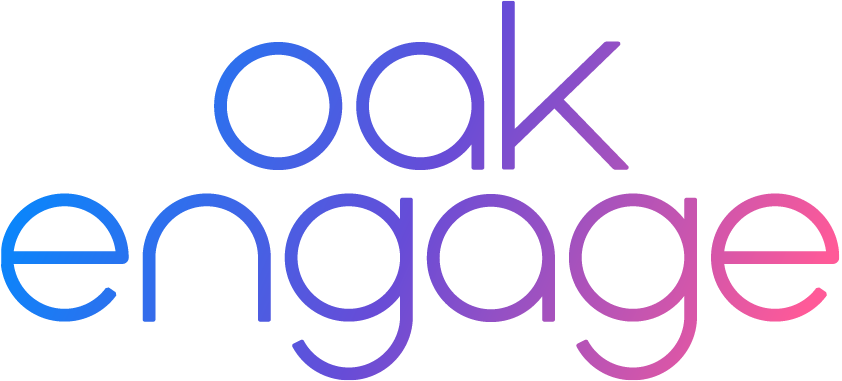Employee experience is no longer a buzzword, it’s a business critical strategy. HR teams today are tasked with designing workplace experiences that not only attract talent but also retain and energise them.
In this guide, we explore how HR professionals can elevate employee experience across the entire journey, from onboarding to offboarding, using modern strategies and digital tools.
What is employee experience?
Employee experience encompasses every interaction an individual has with your organisation, from recruitment and onboarding to development, recognition and exit. It’s shaped by culture, technology, leadership, accessibility and everyday touchpoints that define how employees feel and act at work.
A great employee experience leads to:
-
Higher engagement
-
Stronger culture
-
Improved retention
-
Better performance
Why it matters: The ROI of a strong employee experience
The stats don’t lie. A happy workforce is a more motivated one. Our research found that 54% of employees believe productivity is hindered by negative company culture, which can directly impact the bottom line.
Your employees are more than just staff, they’re people with aspirations and a need for social connection. Considering the amount of hours we spend working in our lifetime, it might as well be enjoyable, right?
Our toxic workplace report also revealed that over two thirds of respondents believed there was a direct link between negative workplace culture and employee retention. The employee experience is built around the company culture. By working on this and showing appreciation for your people, it is likely that turnover rates will slow down, saving the company costs on recruitment and protecting against knowledge loss from your most experienced or best performing colleagues.
A positive employee experience can also have a direct impact on profitability. Check out these stats:
-
Having a good employee experience brings 25% more profit to businesses compared to competitors with poor employee experience. (MIT)
-
Leaders in employee experience have 4x higher than average profits, 2x higher than average revenues and a 41% reduction in Absenteeism. (SAP Success Factors)
-
Having disengaged employees can cost companies up to $550 billion dollars a year. (Gallup)
Why many HR strategies still fall short
Despite best intentions, many HR teams struggle to:
-
Reach remote or deskless employees
-
Track employee sentiment in real-time
-
Align comms and culture across hybrid workplaces
-
Offer consistent recognition and feedback
These challenges can often lead to turnover, siloed cultures and low engagement from employees.
The employee experience framework
An employee experience framework is made of milestones in the employee experience lifecycle. As a business it’s important to work out how you can enhance each one for employees to have the best experience. HR can structure interventions around the following lifecycle stages:
Attraction
This is the stage where you are attracting employees to your company. It’s a critical stage for company growth. This stage is where your ‘Employer Brand’ comes in; it’s how your company comes across to prospective employees and stakeholders.
Create a positive perception of your brand by raising awareness of your company. You can do this through your website and blog. Creating a good culture that your employees shout about is key in attracting top talent. Finally, offer competitive benefits that show you value and care about your employees.
Recruitment
The best recruitment plans offer a positive candidate experience. There are a number of ways you can improve the recruitment process. Ask your team for referrals, your employees are likely to know someone fitting for the role.
Involve your employees and be specific in who you’re searching for, pinpoint exactly who it is you need. Hiring focused on clear criteria and generating data that can be used to inform future hiring is key to a good employee experience.
Onboarding
Onboarding is another critical step for employees. 69% of employees who have a positive onboarding experience are more likely to remain with the employer for three years. Companies that focus on onboarding retain 50% more new employees than companies that don’t.
This is the stage where employees should be made to feel welcome, settling into their job role and aligning themselves to their role. The values of the company should be clearly communicated to employees.
Make sure you provide employees with a job description, vision and values. Line out your expectations from them as a new hire and be sure to check in with them regularly. Plus, make sure your Employee Value Proposition reflects the reality of working life.

Development
Once settled in it’s great to get into the habit of encouraging professional development amongst your employees. This will mean they can thrive in their role and progress within the company.
Encourage team members to be responsible for their own development. When you notice employees progressing and learning, you should recognise and reward. A little appreciation goes a long way.
Retention: This is where you focus on ensuring employees are happy. Work on creating a good culture, work environment and relationships to consistently improve elements of your business.
Exit: Treat an employee exit with the same importance as attraction and recruitment. It’s important to ensure that employees who leave do so in a way that doesn’t disrupt the team's workflow.
When employees do exit the company, be sure to understand why they’re leaving in their exit interview. Ask for honest feedback and if there are any areas that could be improved on.
How HR can improve the employee experience
1. Map the full employee journey
Much like customer journey mapping, you can map your employee journey. Employee journey mapping is a way to track the key stages and experiences in the employee framework.
Create a chronological chart to visually capture and examine each step of the employee experience. Discuss the different stages and look for strengths and weaknesses of each and then use your findings to make changes.
We’ve created a handy template for you to download so you can begin mapping your employee journey.
🧰 FREE TEMPLATE: Employee journey mapping template
2. Use feedback loops and pulse surveys
Regularly gather insights from employees at scale. Surveys help you surface gaps in company culture or communication that need urgent attention. By identifying and addressing any issues as and when they arise, you can shape the employee experience to be a positive one.

3. Prioritise employee recognition
Many of us would agree that recognition for a job well done can encourage us to carry on and keep doing what we do best. Why wait for employee of the month or quarter, when you could send notes of thanks in seconds? Make peer recognition and reward a key part of your employer brand to create a company culture of celebrating all the wins and support, no matter how big or small.

4. Place a focus on wellbeing
Health and wellbeing are incredibly important. Health and wellness initiatives promote positive physical and mental wellbeing amongst your staff. Your employees will be rested, and productive and will come to work every day with a positive outlook and attitude towards work. Need ideas? Giving employees money towards a fitness initiative of their choice is a great start. It encourages employees to pursue passions or try new ones.
Did you know that 46% of employees reported that work life balance was the main contributing factor to happiness at work? Introducing flexible working options also gives employees the chance to have a real work-life balance.
📚 Recommended reading: Experts reveal top tips to enhance employee wellbeing and happiness
5. Modernise your internal communications
Internal comms is ever-evolving, but so is the tech we use to do it. By adapting and investing in tools that will engage your employees and maximise their interactions with colleagues, news and updates, you’re much more likely to see the results you hope for. Just look at what we’ve done for Five Guys, Pizza Express, Burger King and ScS for proof.

How Oak Engage helps HR teams elevate employee experience
Oak Engage is built specifically for modern workforces, especially those with frontline, dispersed or deskless teams.
Here’s how Oak Engage supports better employee experiences:
-
A mobile-first, modern intranet: Keep every employee connected, from HQ to the shop floor
-
Smart content delivery: Deliver relevant updates, comms and resources
-
Social spaces and recognition: Encourage peer-to-peer engagement and celebrate wins
-
Personalised onboarding: Help new hires feel welcome and aligned from day one
-
Streamline processes: Reduce time spent on admin tasks so managers can spend more time with teams
An engaging employee experience isn’t built overnight. It’s a strategic blend of empathy, technology and consistent feedback loops. By mapping the journey, implementing feedback mechanisms and enabling real-time recognition and learning, HR professionals can improve employee retention, connection and performance.




